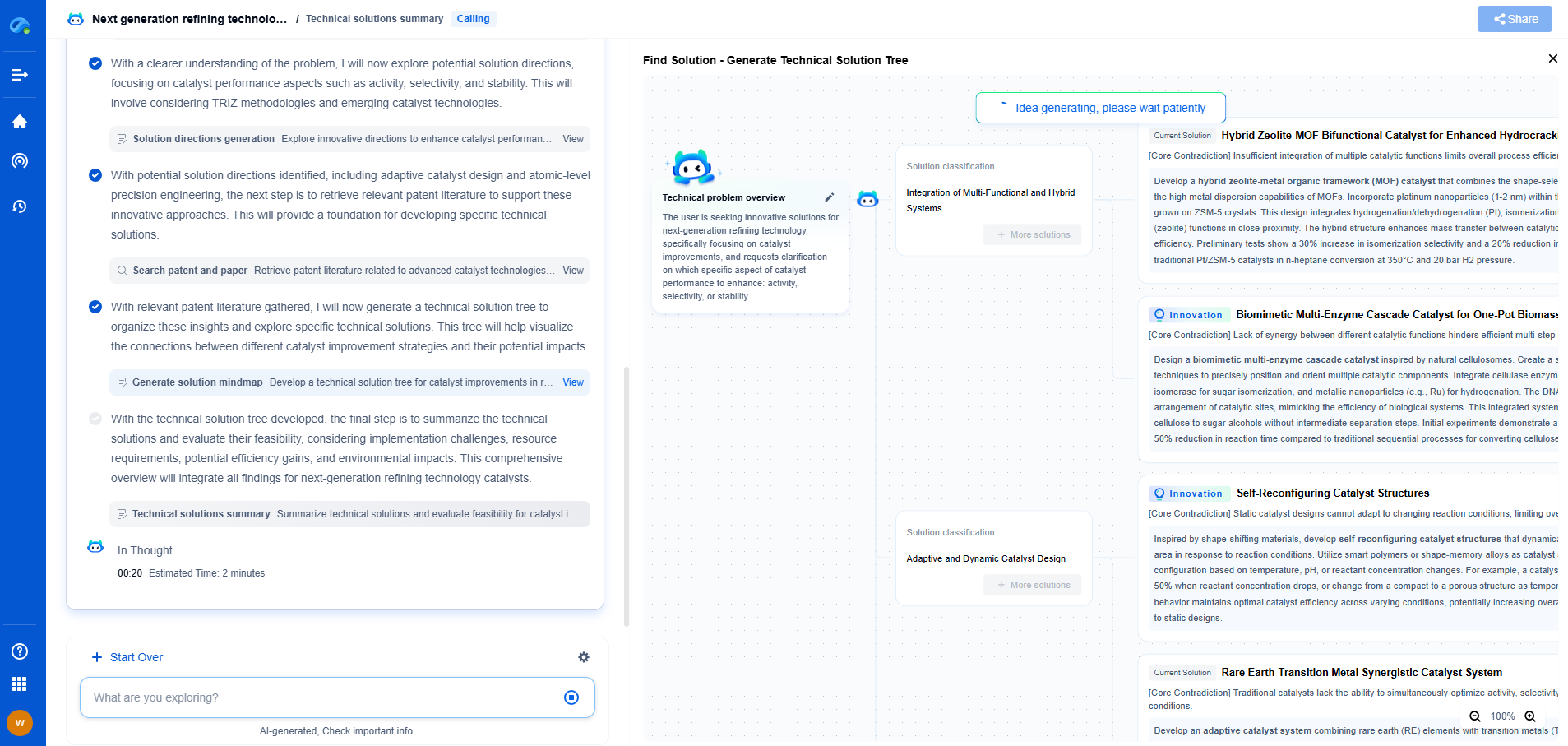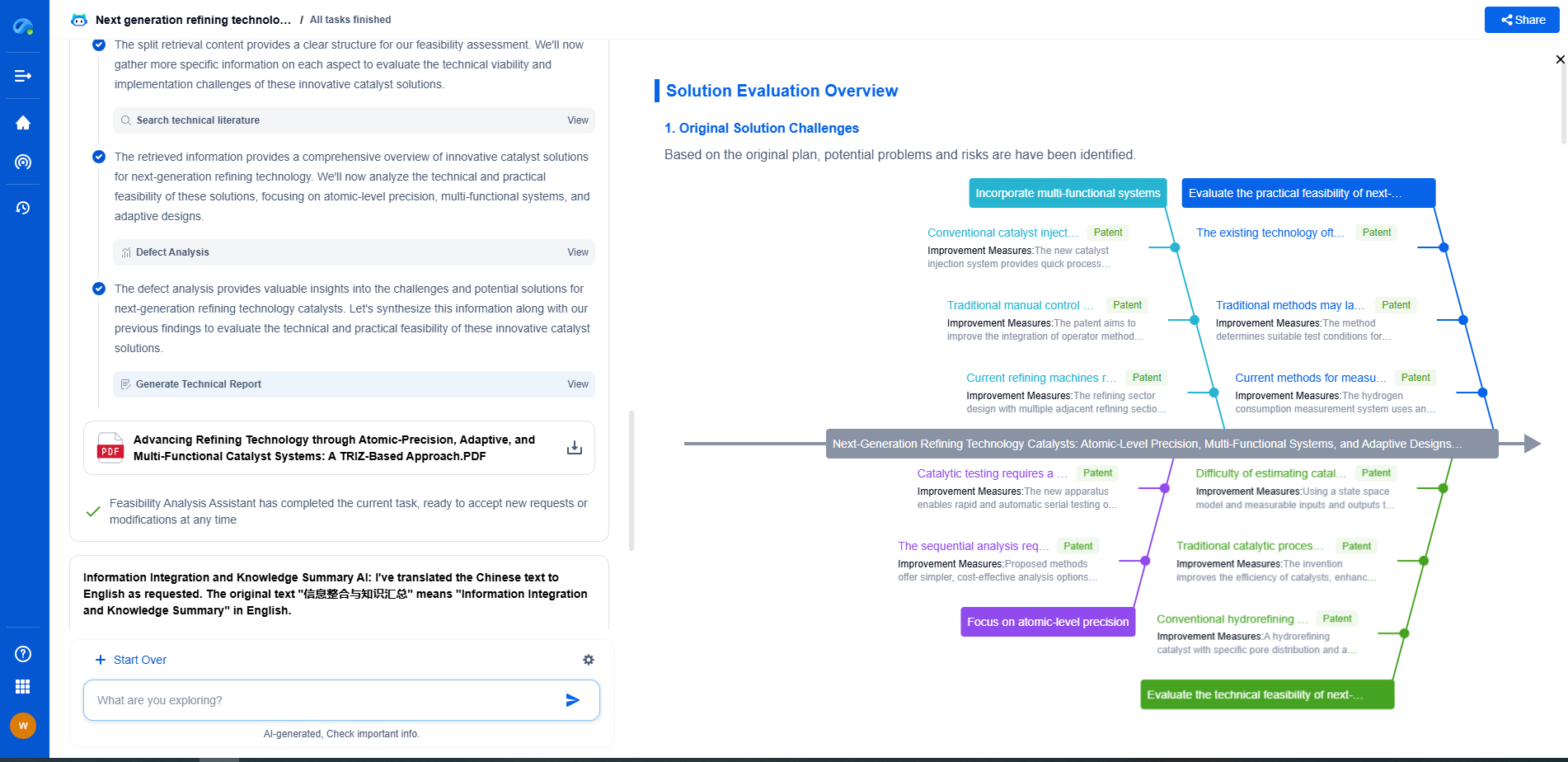Flow Meter Selection Guide: Turbine vs Ultrasonic
JUN 20, 2025 |
Flow meters are essential tools in various industries, providing critical data to monitor and control processes involving fluid flow. Among the numerous types of flow meters available, turbine and ultrasonic flow meters are two popular options. Each has its unique advantages and disadvantages, making them suitable for different applications. This guide will help you understand the differences between these two types of flow meters and assist you in selecting the right one for your needs.
Understanding Turbine Flow Meters
Turbine flow meters operate on a simple yet effective principle. They use a rotor with blades positioned in the path of the fluid flow. As fluid moves through the meter, it causes the rotor to spin. The rotational speed of the rotor is directly proportional to the fluid's velocity, allowing the flow rate to be determined by measuring the rotor's speed.
Advantages of Turbine Flow Meters
1. Accuracy and Repeatability: Turbine flow meters offer high levels of accuracy and repeatability, making them ideal for applications requiring precise measurements.
2. Wide Range of Applications: These meters can measure a variety of fluids, including water, hydrocarbons, and cryogenic liquids, making them versatile.
3. Cost-Effectiveness: Turbine flow meters are generally less expensive compared to other high-precision meters, making them a cost-effective choice for many industries.
Limitations of Turbine Flow Meters
1. Sensitivity to Fluid Properties: Changes in fluid viscosity and density can affect the accuracy of turbine flow meters.
2. Mechanical Wear and Tear: Moving parts in turbine meters can wear over time, especially in applications with abrasive fluids, leading to maintenance requirements.
3. Straight Pipe Requirements: To ensure accurate readings, turbine meters typically need a straight run of pipe before and after the meter, which might not be feasible in all installations.
Exploring Ultrasonic Flow Meters
Ultrasonic flow meters measure fluid flow by using ultrasonic signals. They can be classified into two main types: transit-time and Doppler. Transit-time meters send ultrasonic pulses through the fluid and measure the time it takes for the pulses to travel from one transducer to another. The flow rate is then calculated based on the difference in transit times. Doppler meters, on the other hand, measure the frequency shift of ultrasonic signals reflected off particles or bubbles in the fluid.
Advantages of Ultrasonic Flow Meters
1. Non-Invasive Measurement: Ultrasonic meters do not require insertion into the fluid stream, reducing the risk of contamination and pressure loss.
2. Minimal Maintenance: With no moving parts, ultrasonic flow meters require less maintenance and have a longer operational life.
3. Versatility: These meters can handle a wide range of fluid types, including clean, dirty, viscous, and corrosive fluids.
Limitations of Ultrasonic Flow Meters
1. Higher Initial Cost: Ultrasonic flow meters are generally more expensive upfront compared to other types of flow meters.
2. Performance Influenced by Fluid Properties: The presence of bubbles, particles, or stratification in the fluid can affect the accuracy of ultrasonic meters.
3. Sophisticated Technology: The advanced technology used in ultrasonic meters may require specialized knowledge for installation and troubleshooting.
Selecting the Right Flow Meter for Your Application
When choosing between turbine and ultrasonic flow meters, several factors should be considered:
1. Fluid Characteristics: Consider the type of fluid you are measuring. If it is clean and has stable properties, a turbine flow meter might be suitable. If the fluid is dirty or has varying properties, an ultrasonic meter could be a better choice.
2. Installation Environment: Evaluate the space available for installation. Turbine flow meters require straight pipe runs, whereas ultrasonic meters can be installed in more constrained spaces.
3. Budget Constraints: Determine the budget available for both initial purchase and ongoing maintenance. Turbine meters may be cheaper initially but could incur more maintenance costs over time.
4. Accuracy Requirements: Identify the level of accuracy needed for your application. Both meter types offer high accuracy, but the specific conditions and fluid properties might make one more suitable than the other.
Conclusion
Both turbine and ultrasonic flow meters have their own sets of advantages and limitations. The choice between them should be guided by the specific needs of your application, taking into account factors such as fluid characteristics, installation environment, budget, and accuracy requirements. By understanding the fundamental differences and capabilities of each type, you can make a more informed decision that will lead to efficient and reliable fluid flow measurement in your operations.
Transform the Way You Innovate in Pipeline Technology—with AI-Powered Intelligence
From corrosion-resistant materials to smart monitoring systems and advanced flow control mechanisms, the pipeline industry is undergoing rapid technological transformation. Yet keeping up with evolving engineering solutions, regulatory landscapes, and competitive patents can be a major bottleneck for R&D and IP teams.
Patsnap Eureka is your AI-powered research companion—built specifically for professionals in high-tech and infrastructure domains like pipeline technology. Whether you're designing high-pressure transport systems, assessing trenchless installation innovations, or safeguarding proprietary flow assurance solutions, Eureka provides real-time insights into global patent trends, emerging technologies, and R&D intelligence—all in one intuitive interface.
Empower your team to innovate faster, reduce technical blind spots, and stay ahead of industry shifts. Discover Patsnap Eureka today and bring clarity and confidence to your pipeline technology decisions.
- R&D
- Intellectual Property
- Life Sciences
- Materials
- Tech Scout
- Unparalleled Data Quality
- Higher Quality Content
- 60% Fewer Hallucinations
Browse by: Latest US Patents, China's latest patents, Technical Efficacy Thesaurus, Application Domain, Technology Topic, Popular Technical Reports.
© 2025 PatSnap. All rights reserved.Legal|Privacy policy|Modern Slavery Act Transparency Statement|Sitemap|About US| Contact US: help@patsnap.com

